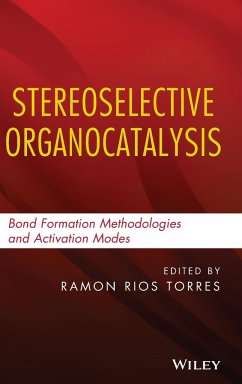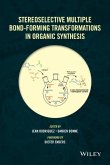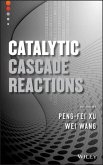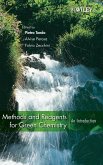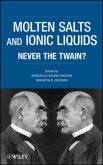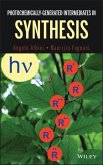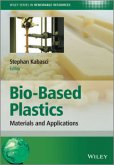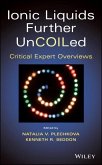This book covers the most important methodologies reported for stereoselective organocatalysis, based not only on the activation mode but also the type of bond formed. Starting with an introduction laying out the different activation modes, the chapters move on to describe the most important methodologies for the formation of key chemical bonds, including carbon-carbon (C-C), carbon-nitrogen (C-N), and carbon-halogen (C-X) bonds. It features an organization and approach useful for both students and practicing chemists in industry.
Sets forth an important group of environmentally friendly organic reactions With contributions from leading international experts in organic synthesis, this book presents all the most important methodologies for stereoselective organocatalysis, fully examining both the activation mode as well as the type of bond formed. Clear explanations guide researchers through all the most important methods used to form key chemical bonds, including carbon-carbon (C-C), carbon-nitrogen (C-N), and carbon-halogen (C-X) bonds. Moreover, readers will discover how the use of non-metallic catalysts facilitates a broad range of important reactions that are environmentally friendly and fully meet the standards of green chemistry. Stereoselective Organocatalysis begins with an historical overview and a review of activation modes in asymmetric organocatalysis. The next group of chapters is organized by bond type, making it easy to find bonds according to their applications. The first of these chapters takes a detailed look at the many routes to C-C bond formation. Next, the book covers: * Organocatalytic C-N bond formation * C-O bond formation * C-X bond formation * C-S, C-Se, and C-B bond formation * Enantioselective organocatalytic reductions * Cascade reactions forming both C-C bonds and C-heteroatom bonds The final chapter is devoted to the use of organocatalysis for the synthesis of natural products. All the chapters in the book are extensively referenced, serving as a gateway to the growing body of original research reports and reviews in the field. Based on the most recent findings and practices in organic synthesis, Stereoselective Organocatalysis equips synthetic chemists with a group of organocatalytic reactions that will help them design green reactions and overcome many challenges in organic synthesis.
Hinweis: Dieser Artikel kann nur an eine deutsche Lieferadresse ausgeliefert werden.
Sets forth an important group of environmentally friendly organic reactions With contributions from leading international experts in organic synthesis, this book presents all the most important methodologies for stereoselective organocatalysis, fully examining both the activation mode as well as the type of bond formed. Clear explanations guide researchers through all the most important methods used to form key chemical bonds, including carbon-carbon (C-C), carbon-nitrogen (C-N), and carbon-halogen (C-X) bonds. Moreover, readers will discover how the use of non-metallic catalysts facilitates a broad range of important reactions that are environmentally friendly and fully meet the standards of green chemistry. Stereoselective Organocatalysis begins with an historical overview and a review of activation modes in asymmetric organocatalysis. The next group of chapters is organized by bond type, making it easy to find bonds according to their applications. The first of these chapters takes a detailed look at the many routes to C-C bond formation. Next, the book covers: * Organocatalytic C-N bond formation * C-O bond formation * C-X bond formation * C-S, C-Se, and C-B bond formation * Enantioselective organocatalytic reductions * Cascade reactions forming both C-C bonds and C-heteroatom bonds The final chapter is devoted to the use of organocatalysis for the synthesis of natural products. All the chapters in the book are extensively referenced, serving as a gateway to the growing body of original research reports and reviews in the field. Based on the most recent findings and practices in organic synthesis, Stereoselective Organocatalysis equips synthetic chemists with a group of organocatalytic reactions that will help them design green reactions and overcome many challenges in organic synthesis.
Hinweis: Dieser Artikel kann nur an eine deutsche Lieferadresse ausgeliefert werden.

